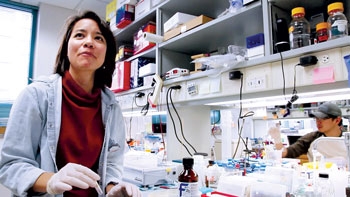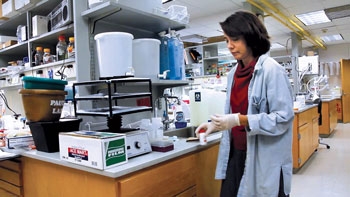We sat down with Tanya Paull to learn more about her research and its relation to tumor development.
 Dr. Tanya Paull is a professor of molecular genetics and microbiology and Howard Hughes Medical Institute Investigator. She has dedicated her career to understanding DNA repair, which applies to genetic diseases and cancer.
Dr. Tanya Paull is a professor of molecular genetics and microbiology and Howard Hughes Medical Institute Investigator. She has dedicated her career to understanding DNA repair, which applies to genetic diseases and cancer.
We asked her a few questions recently.
What is MRN?
MRN is a protein complex that’s been found in every organism on the planet that’s been analyzed genetically. It seems to be present in every biological instance where there’s a break in DNA.
 What does MRN do in response to such breaks?
What does MRN do in response to such breaks?
In the cells we’re looking at, the MRN binds to the DNA and helps repair it. We think it splays out the severed ends of the double helix in such a way that it controls what’s able to bind there. It helps recruit repair enzymes, and it recruits and activates another protein, known as ATM, that signals a damaged cell not to keep dividing.
Why should it stop dividing?
Otherwise the damage will be passed on to a daughter cell and just create more damage to more cells. Many tumor cells have lost that element of signaling.
What do you hope to learn about cancer by studying MRN & ATM?
Fundamentally, cancer is a genetic disorder that results from mutations; some of these result from rearrangements of DNA that begin with a break. We’re not going to fully understand how to deal with cancer and its many aspects until we understand the players that are controlling DNA damage.

















Comments